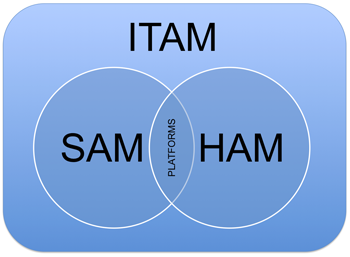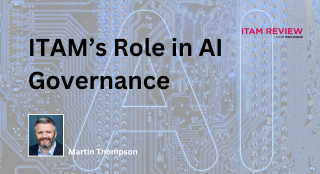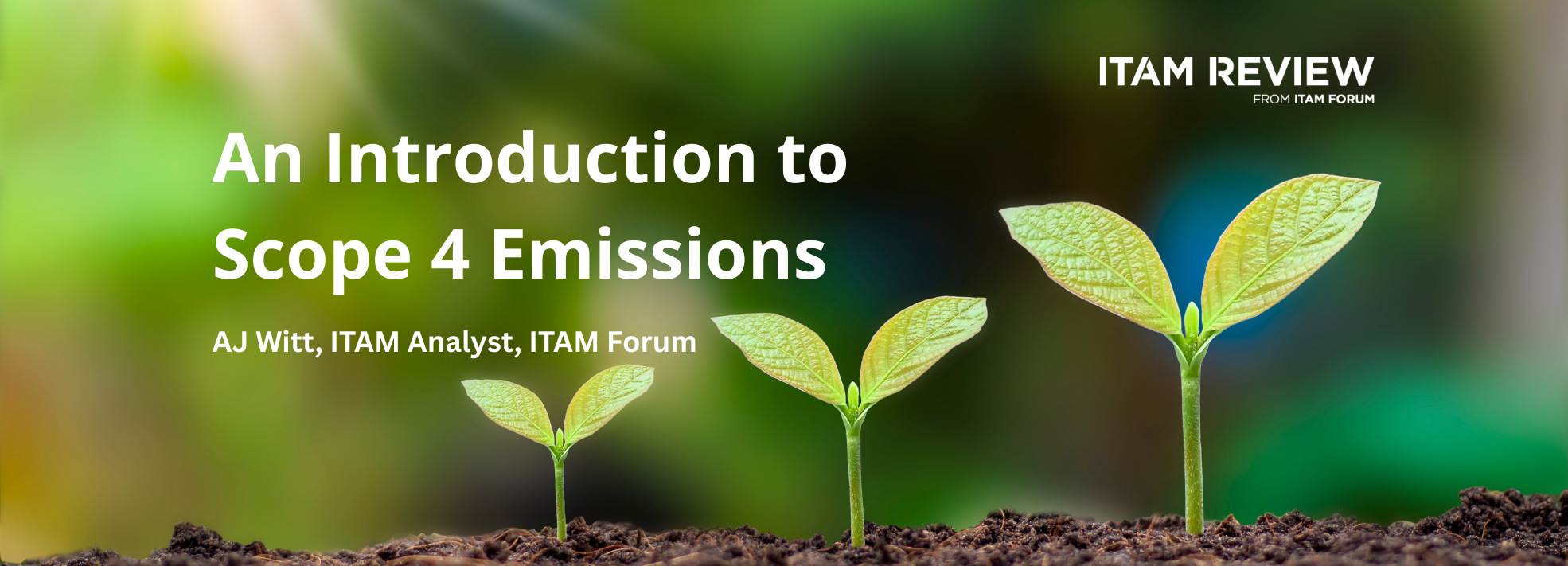Managing Software as an Asset
This is a chapter from a book entitled “Software Asset Management (SAM) ~ the first ninety days“. I plan to publish each chapter online before publishing the whole book as a low cost ebook or paperback. I welcome your feedback and criticism along the way. Please either leave a comment on the individual chapters or get in touch. A summary of all chapters can be found here.
This chapter looks at how Asset Management principles can be applied to managing software. First of all it is useful to explore some IT Asset Management definitions and explain our focus on SAM.
What is IT Asset Management?
In the previous chapter we explored the concept of ‘An Asset’ – something of value that the company owns which has associated benefits and risks.
‘IT Assets’ are things of value owned or managed by IT.
These IT Assets may be software, hardware, systems or services. It follows that IT Asset Management (ITAM) is the practice of managing these IT Assets throughout their life in the business for maximum value and minimal risk.
Definitions and Overlap
 The diagram (right) shows how ITAM, SAM and HAM intersect.
The diagram (right) shows how ITAM, SAM and HAM intersect.
- IT Asset Management (ITAM)
- Software Asset Management (SAM)
- Hardware Asset Management (HAM)
As we can see in the diagram SAM and HAM are subcomponent parts of the broader discipline of ITAM.
The terms SAM and ITAM tend to be used interchangeably in the industry – they are not discreet disciplines but have significant overlap and dependencies.
The key dependency between managing hardware and software is the platform. The amount of money paid for software can vary dramatically based on the hardware used to run it. It could be firmware on a switch, the number of processors on a server or the operating system of a desktop.
Managing hardware and software are inextricably linked. For example if you want to manage your Windows operating system estate you need to know how many hardware devices you own, or if you want to manage processor based server licensing metrics you need to know the hardware configuration of the server, and so on.
Similarly job titles are usually split between hardware and software. A Software Asset Manager and Hardware Asset Manager might report to the IT Asset Manager.
Implementing a good SAM practice will undoubtedly have positive repercussions on the management of other assets but will fall short of full ITAM. For example the retirement and disposal of hardware is not typically a SAM function.
Why SAM gets the limelight
SAM tends to get more exposure and emphasis within the field of ITAM because:
- Software typically constitutes more IT budget than hardware and therefore represents more value to manage.
- Software is riskier (It is often complicated and intangible, It typically contains more contractual booby traps than hardware)
- The most compelling and costly business drivers in ITAM relate to software
Managing Intangible Things
Software can be complicated, expensive and ephemeral, unlike hardware that collects dust, takes up space and can serve as a doorstop or paperweight when not in use.
Managing intangible things is not an easy business – try explaining to a non-IT person in your business how your budget was spent on laptops compared to something intangible like Client Access Licenses (A licensing concept with no physical evidence – The right of user to access technology on a server) – one is significantly more easier to explain that the other.
Similarly, when a member of staff leaves the business and visits the IT department to return their IT equipment, their laptop and associated cables and gadgets are physical inventory left on the desk whereas the software they return is often digital, virtual, sometimes invisible and commonly more expensive than the hardware. On the basis that you can’t control what you don’t know exists – software represents significant risk and has potential for enormous waste if not managed correctly.
Management of hardware should not be overlooked. IT hardware in a business is usually inextricably linked to corporate data. So there is often a compelling driver to manage hardware effectively if only so that corporate data does not leak off the premises.
At the time of writing it has just been reported that the Information Commissioners Office (ICO) in the UK has fined the NHS £200K for selling old hardware containing patient records on eBay. A third party offered to dispose of the equipment for free resulting in patient records showing up in the hands of eBay buyers. A chunky fine, damage to reputation and all round hassle because of the mismanagement of IT assets.
You will also find that the deeper we delve into the world of SAM, the more compelling it becomes to do HAM properly; however for the purposes of this book we shall focus on software.
This is a chapter from a book entitled “Software Asset Management (SAM) ~ the first ninety days“. I plan to publish each chapter online before publishing the whole book as a low cost ebook or paperback. I welcome your feedback and criticism along the way. Please either leave a comment on the individual chapters or get in touch. A summary of all chapters can be found here.
Can’t find what you’re looking for?
More from ITAM News & Analysis
-
The Allure of the Cloud: What are We Chasing?
When I ask ITAM professionals about their transition to the cloud, the responses are often similar. “It wasn’t my decision.” It’s striking how many people feel this way—decisions about moving from on-premises solutions to the cloud ... -
The M&S Cyberattack: How IT Asset Management Can Make or Break Your Recovery
Marks & Spencer (M&S), the iconic UK retailer, recently became the latest high-profile victim of a devastating cyberattack. Fellow retailers The Co-Op and Harrods were also attacked. Recent reports suggest the rapid action at the Co-Op ... -
AI in ITAM: Insightful Signals from the Front Line
During our Wisdom Unplugged USA event in New York in March 2025, we engaged ITAM professionals with three targeted polling questions to uncover their current thinking on Artificial Intelligence—what concerns them, where they see opportunity, and ...
Podcast
ITAM training
Similar Posts
-
The M&S Cyberattack: How IT Asset Management Can Make or Break Your Recovery
Marks & Spencer (M&S), the iconic UK retailer, recently became the latest high-profile victim of a devastating cyberattack. Fellow retailers The Co-Op and Harrods were also attacked. Recent reports suggest the rapid action at the Co-Op ... -
AI in ITAM: Insightful Signals from the Front Line
During our Wisdom Unplugged USA event in New York in March 2025, we engaged ITAM professionals with three targeted polling questions to uncover their current thinking on Artificial Intelligence—what concerns them, where they see opportunity, and ... -
How ISO/IEC 19770-1 Can Help Meet FFIEC Requirements
In the world of ITAM, the regulatory spotlight continues to intensify, especially for financial institutions facing increasing scrutiny from regulatory bodies due to the growing importance of IT in operational resilience, service delivery, and risk management. ... -
An Introduction to Scope 4 Emissions
Executive Summary For ITAM teams, sustainability is a core responsibility and opportunity. Managing hardware, software, and cloud resources now comes with the ability to track, reduce, and report carbon emissions. Understanding emission scopes—from direct operational emissions ...




